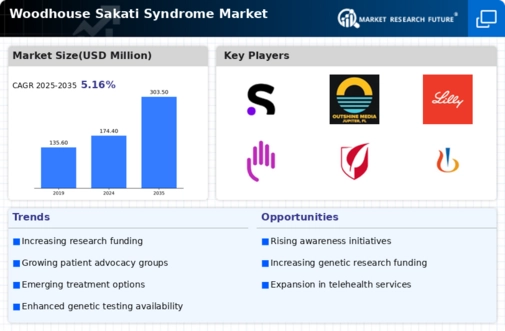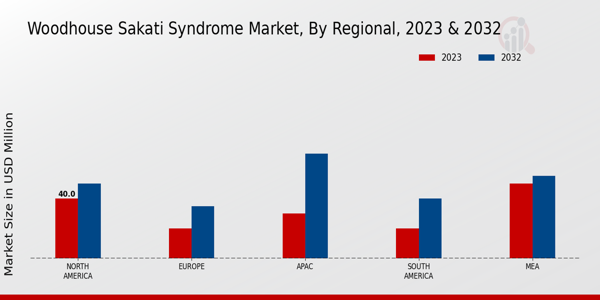Market Growth Projections
Government Support and Funding
Government initiatives and funding for rare diseases are pivotal in shaping the Global Woodhouse Sakati Syndrome Market Industry. Various countries are implementing policies to support research, treatment, and awareness of rare genetic disorders. Such support often translates into increased funding for clinical trials and research projects focused on Woodhouse Sakati Syndrome. This financial backing is essential for fostering innovation and developing new therapies. As a result, the market is projected to experience a compound annual growth rate (CAGR) of 5.16% from 2025 to 2035, reflecting the positive impact of government involvement on the Global Woodhouse Sakati Syndrome Market Industry.
Advancements in Genetic Research
Ongoing advancements in genetic research are significantly influencing the Global Woodhouse Sakati Syndrome Market Industry. Innovations in gene therapy and CRISPR technology are paving the way for potential treatments and interventions for genetic disorders. These advancements not only enhance understanding of Woodhouse Sakati Syndrome but also open avenues for targeted therapies. As research progresses, the market is anticipated to grow, with estimates suggesting a value of 303.5 USD Million by 2035. The integration of cutting-edge research into clinical practice is likely to attract investment and drive the Global Woodhouse Sakati Syndrome Market Industry forward.
Emerging Patient Advocacy Groups
The emergence of patient advocacy groups is playing a significant role in the Global Woodhouse Sakati Syndrome Market Industry. These organizations are instrumental in raising awareness, providing support, and advocating for research funding for Woodhouse Sakati Syndrome. By mobilizing communities and fostering collaboration among stakeholders, these groups enhance the visibility of the condition and its impact on patients' lives. Their efforts are likely to lead to increased funding for research and development, thereby driving market growth. As the influence of these advocacy groups expands, they are expected to contribute to the overall development of the Global Woodhouse Sakati Syndrome Market Industry.
Growing Demand for Genetic Testing
The demand for genetic testing is on the rise, driven by the need for early diagnosis and personalized treatment options for conditions like Woodhouse Sakati Syndrome. As healthcare providers increasingly recognize the importance of genetic testing, patients are more likely to seek these services. This trend is particularly evident in the Global Woodhouse Sakati Syndrome Market Industry, where accurate diagnosis is crucial for effective management. The market's growth is supported by the increasing availability of genetic testing services and advancements in technology that enhance testing accuracy. Consequently, this demand is expected to contribute to the market's valuation of 174.4 USD Million in 2024.
Increasing Awareness of Genetic Disorders
The rising awareness surrounding genetic disorders, particularly Woodhouse Sakati Syndrome, is a crucial driver for the Global Woodhouse Sakati Syndrome Market Industry. Educational initiatives and advocacy by health organizations are enhancing public knowledge about this rare condition. As awareness grows, more individuals seek genetic testing and counseling, leading to an increase in diagnoses. This trend is expected to contribute to the market's expansion, with projections indicating a market value of 174.4 USD Million in 2024. The heightened focus on genetic disorders is likely to foster research and development, further stimulating the Global Woodhouse Sakati Syndrome Market Industry.














